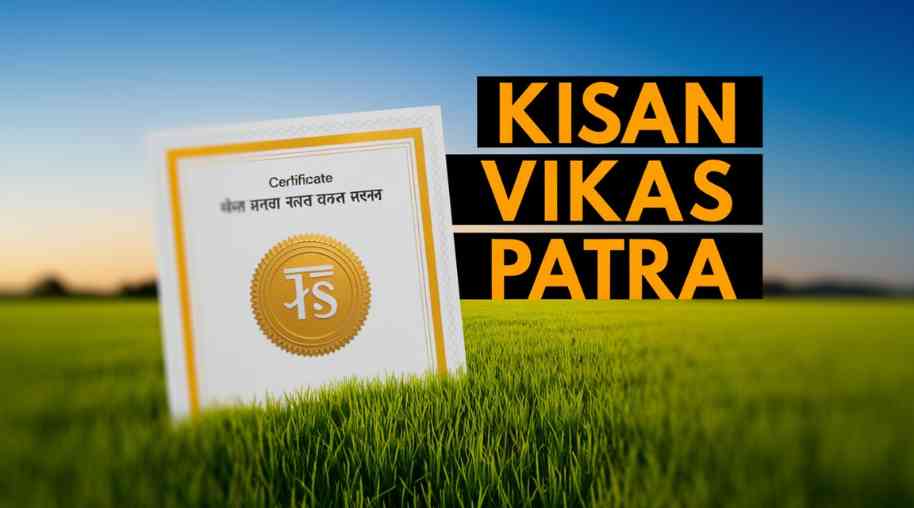KVP Full Form-Kisan Vikas Patra
by Shashi Gaherwar
0 1951
Kisan Vikas Patra (KVP): A Secure Investment Scheme for Long-Term Wealth Growth
Introduction
Small savings schemes are vital for financial security and wealth creation in India. The Kisan Vikas Patra (KVP), a government-backed fixed-income savings scheme, promotes long-term savings by doubling investments over a set period. Available at post offices and designated banks, KVP is a safe and reliable option for risk-averse investors. This article covers KVP’s features, benefits, eligibility, interest rates, taxation, and investment process.

What is Kisan Vikas Patra (KVP)?
Introduced in 1988 by the Government of India, Kisan Vikas Patra (KVP) is a savings certificate scheme initially aimed at farmers but now open to all. Key features include:
- Guaranteed Returns: Fixed returns over a specific period.
- Capital Protection: Zero risk due to government backing.
- Liquidity: 2.5-year lock-in with conditional premature withdrawals.
- Doubling Period: Investment doubles in 124 months (10 years, 4 months).
Kisan Vikas Patra Interest Rate
The KVP interest rate is revised quarterly by the government. As of April 2023:
- Interest Rate: 7.5% per annum (compounded annually).
- Maturity Period: 124 months.
Note: Rates are subject to change based on government policies.
Benefits of Kisan Vikas Patra
- Secure Returns: Unaffected by market fluctuations, ensuring risk-free investment.
- Compounding Interest: Annual compounding maximizes wealth growth.
- Flexible Investment: Starts at ₹1,000 with no upper limit.
- Long-Term Discipline: Lock-in period encourages sustained savings.
- Loan Facility: KVP certificates can be used as collateral for loans.
- Transferable: Certificates can be transferred between individuals or post offices/banks.
Eligibility for Kisan Vikas Patra
- Indian Citizens: Residents only.
- Age: Minimum 18 years.
- Joint Accounts: Allowed for two adults.
- Minors: Parents/guardians can invest on behalf of minors.
- Trusts: Eligible to invest.
Not Eligible: NRIs and HUFs.
How to Invest in Kisan Vikas Patra?
- Step 1: Visit a Post Office/Bank: Approach an authorized post office or bank.
- Step 2: Fill Form A: Submit the KVP application form with personal details.
- Step 3: Provide KYC: Submit Aadhaar, PAN, Voter ID, Passport, or Driving License.
- Step 4: Make Payment: Pay via cash, cheque, or demand draft.
- Step 5: Receive Certificate: Obtain the KVP certificate for safekeeping.
- Step 6: Online Option: Some banks offer online applications.
Premature Withdrawal and Maturity
- Maturity: Full amount withdrawable after 124 months.
- Premature Withdrawal: Allowed after 2.5 years, except in cases of:
- Death of the holder.
- Court orders.
- Use as loan collateral.
Is KVP a Good Investment Option?
KVP suits investors who:
- Seek safe, guaranteed returns.
- Can commit to long-term investment.
- Want an alternative to fixed deposits.
- Aim to double their money securely.
For tax-saving, options like PPF or NSC may be better.
Kisan Vikas Patra (KVP) is a low-risk, long-term investment offering fixed returns and capital safety. Despite lacking tax benefits, its accessibility and guaranteed doubling make it appealing for risk-averse investors. Evaluate financial goals and liquidity needs before investing.
Further Learning Resources
If you’re passionate about building a successful blogging website, check out this helpful guide at Coding Tag – How to Start a Successful Blog. It offers practical steps and expert tips to kickstart your blogging journey!
For dedicated UPSC exam preparation, we highly recommend visiting www.iasmania.com. It offers well-structured resources, current affairs, and subject-wise notes tailored specifically for aspirants. Start your journey today!

Share:








Comments
Waiting for your comments